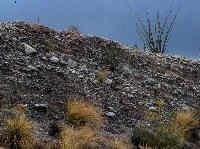Stochastic Analysis of Reactive Transport
Researcher: Thomas Harter

Paralleling my efforts to create projects that would generate scientific field data describing the fate and transport of nonpoint source contaminants in soil and groundwater, I have been involved in developing and synthesizing mathematical concepts and models that explicitly account for spatial and temporal variability of physical and chemical processes we measure in our field projects. The natural variability in the sediments that make up California's aquifers can be tremendous. It has significant impact on the distribution, travel time, and fate of contaminants. Using the data obtained from the field, these models are capable not only of giving better estimates of the future fate of nonpoint source contaminants, but also allow us to quantify estimates of the uncertainty associated with assessing the fate of contaminants.
References:

Harter T., Stochastic analysis of reactive transport in heterogeneous porous media, in: Govindaraju, R. S. (ed.), Stochastic Methods in Subsurface Contaminant Hydrology, American Society of Civil Engineers, 410p., 2002.
Harter, T., Uncertainty and risk analysis of contaminant transport, Proceedings, California Biennial Groundwater Conference, Sacramento, September 14-15, 1997, University of California Water Resources Center.
Harter T., 1996, On the usefulness of analytical stochastic models for solute transport in heterogeneous, variably saturated soils, 1996 ASAE Annual International Meeting, Phoenix, Arizona, July 1996, ASAE, St. Joseph, Michigan 49085
Also see:
Flow and Solute Transport in Unsaturated Porous Media with Variable Water Content
